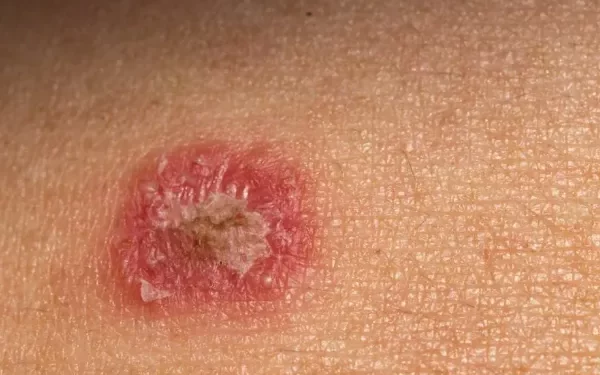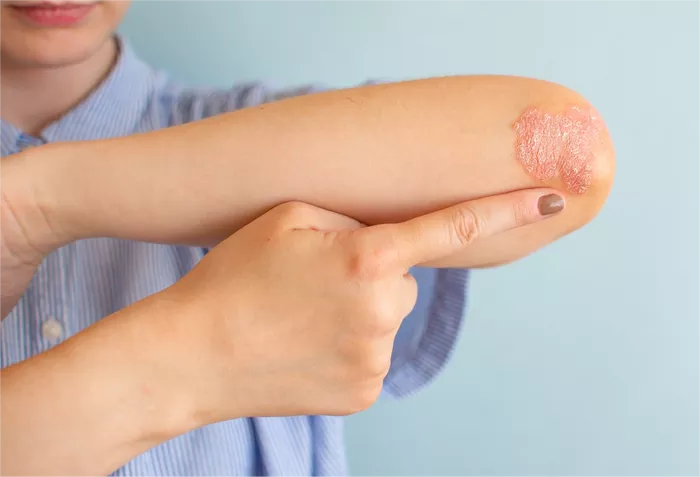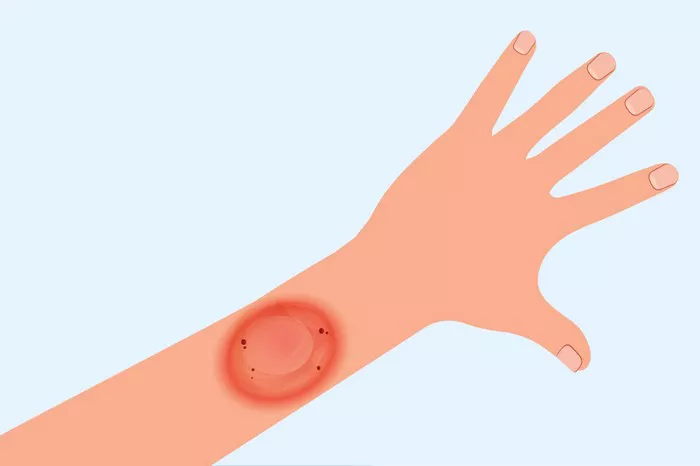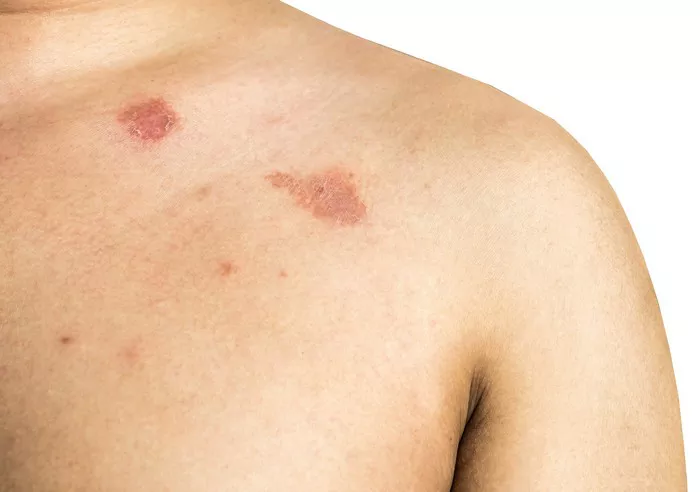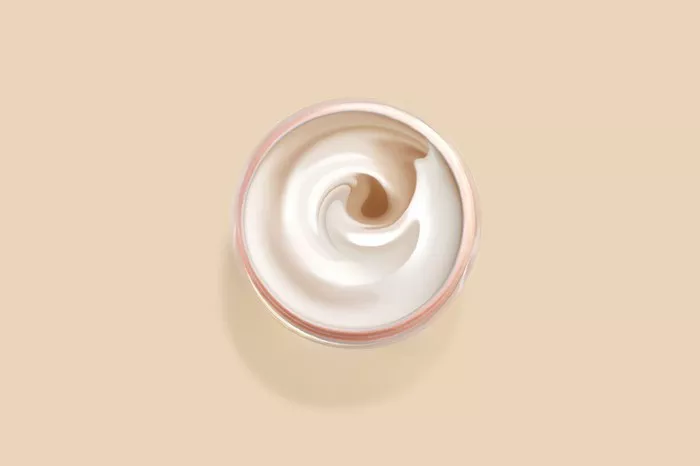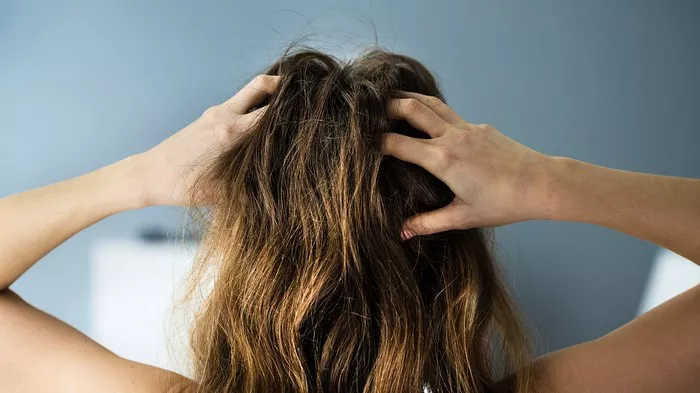Ringworm is a fungal infection that affects the skin, hair, and nails. Despite its name, it has nothing to do with worms. It’s called “ringworm” because the infection often forms a ring-like shape on the skin. The infection is caused by dermatophytes, a type of fungi that thrive on the outer layers of the skin. Understanding where ringworm usually starts is essential for preventing and managing this condition. In this article, we will explore the common areas where ringworm typically begins and the factors that make certain areas more vulnerable.
What is Ringworm?
Before we dive into where ringworm usually starts, it’s important to understand what ringworm is. Ringworm is a superficial fungal infection caused by a group of fungi known as dermatophytes. These fungi live on the outermost layer of the skin, hair, and nails, feeding on keratin, a protein found in these areas. When the fungi infect the skin, they cause a red, itchy rash that often forms a ring-like shape, with a clearer center and a raised, red edge.
Ringworm can spread through direct contact with an infected person or object, such as towels, bedding, or clothing. It can also spread from animals to humans, especially pets like cats and dogs, which can carry the infection without showing symptoms.
Common Areas Where Ringworm Starts
Ringworm can affect different parts of the body, but it tends to start in specific areas due to certain factors. Let’s explore these common locations.
1. Scalp (Tinea Capitis)
One of the most common areas where ringworm starts is the scalp. Known as tinea capitis, ringworm on the scalp is particularly common in children. This infection starts as small, round patches of hair loss, often accompanied by itching. The skin may appear red, scaly, and inflamed. Over time, the patches may spread, and the scalp can develop black dots, where hair follicles have been damaged.
The scalp is a warm and moist area, which provides the perfect environment for the dermatophytes to grow. Ringworm on the scalp is highly contagious and can spread quickly among children, especially in places like schools, daycare centers, and sports activities. Close contact with infected individuals or sharing hairbrushes, combs, or hats can easily spread the infection.
2. Feet (Tinea Pedis or Athlete’s Foot)
Another common location for ringworm is the feet. Known as tinea pedis, or more commonly as athlete’s foot, this infection usually starts between the toes and on the soles of the feet. It is often triggered by damp, sweaty conditions, which make the feet an ideal breeding ground for fungi. People who walk barefoot in damp places like swimming pools, locker rooms, or public showers are particularly at risk.
Tinea pedis typically starts as itching, burning, or stinging between the toes or on the soles of the feet. The skin may become red, cracked, and peely. If left untreated, the infection can spread to other areas of the feet or even to the toenails, causing discoloration and thickening of the nails.
3. Groin Area (Tinea Cruris or Jock Itch)
Tinea cruris, commonly known as jock itch, is another area where ringworm frequently starts. It usually affects the groin area, inner thighs, and buttocks. Jock itch is most common in men, especially those who sweat heavily and wear tight clothing or sports gear that traps moisture. Athletes who wear tight-fitting clothing or undergarments are also at higher risk.
Jock itch starts as red, itchy patches that may spread to the inner thighs or buttocks. The rash often has a ring-like shape with a raised edge. The skin may become flaky, and the infection can cause a burning sensation. The fungal infection thrives in warm, moist environments, which is why the groin area is so vulnerable. Sweating, wearing non-breathable fabrics, and not drying the area thoroughly after showering can increase the likelihood of developing jock itch.
4. Body (Tinea Corporis)
Ringworm can also start on other areas of the body, a condition known as tinea corporis. This type of ringworm can appear almost anywhere on the body, but it is most common on the arms, legs, and torso. It often begins as small, circular, red patches with a raised border and a clearer center. These patches can gradually expand in size, forming larger rings.
Tinea corporis is commonly spread through contact with an infected person, animal, or object. Athletes who participate in contact sports, such as wrestling or football, are at higher risk of contracting tinea corporis due to the close physical contact involved. The infection can spread through shared equipment, towels, or bedding.
5. Nails (Tinea Unguium or Onychomycosis)
Although less common, ringworm can start in the nails. This condition is known as tinea unguium or onychomycosis. It typically affects the toenails but can also occur in the fingernails. Fungal nail infections often begin as a small spot or discoloration on the nail, which may gradually spread to cover the entire nail. The nail may become thickened, discolored (yellow, brown, or white), and brittle, often crumbling or separating from the nail bed.
Tinea unguium is more common in people with a history of athlete’s foot or other types of ringworm. It can also be more common in older adults, as nails tend to grow more slowly with age. People who frequently expose their hands or feet to moisture or wet conditions, like healthcare workers, swimmers, and construction workers, are at increased risk.
Factors That Make Certain Areas More Vulnerable to Ringworm
Certain factors increase the likelihood of ringworm starting in specific areas. Understanding these factors can help you take steps to prevent the infection from developing.
Warm and Moist Environments
Ringworm thrives in warm, damp, and sweaty conditions. This is why areas like the feet, groin, and scalp are more susceptible to infection. The fungi that cause ringworm prefer environments where moisture and heat create the ideal breeding ground. Wearing tight, non-breathable clothing or shoes can trap moisture against the skin, creating an environment conducive to fungal growth.
Direct Contact with Infected Individuals
Ringworm is highly contagious and spreads easily through direct skin-to-skin contact with an infected person. For example, tinea capitis, which affects the scalp, often spreads through shared hairbrushes or hats. Likewise, tinea corporis, or ringworm on the body, can be passed through close physical contact during sports or activities.
Poor Hygiene and Inadequate Drying
Inadequate personal hygiene, such as not showering after physical activity or not drying areas thoroughly after bathing, increases the risk of developing ringworm. Moist, damp skin is more prone to fungal infections. Ensuring that areas like the feet, groin, and scalp are kept clean and dry is essential to prevent the fungi from taking hold.
Close Contact with Animals
Animals, particularly pets like cats and dogs, can carry ringworm and transmit it to humans. Animals may not always show symptoms of the infection, making it harder to detect. Pet owners should be cautious and check their animals for signs of ringworm, especially if they notice hair loss, scaly patches, or redness on their pets’ skin.
Prevention and Treatment of Ringworm
Understanding where ringworm usually starts is a critical first step in prevention. Here are some tips to reduce your risk of developing ringworm:
Maintain good hygiene: Shower regularly and dry your skin thoroughly, especially in areas prone to moisture, such as the feet, groin, and underarms.
Avoid sharing personal items: Do not share towels, clothing, hats, or combs with others.
Wear breathable clothing: Choose clothing made from natural fibers like cotton that allow your skin to breathe.
Keep feet dry: If you have athlete’s foot, make sure to keep your feet dry and wear moisture-wicking socks. Change socks frequently, especially after exercise.
Treat pets: If you suspect your pet has ringworm, take them to the vet for treatment. Be cautious when handling animals with signs of the infection.
If you do develop ringworm, treatment typically involves antifungal creams, ointments, or oral medications. It’s essential to follow the recommended treatment regimen to ensure the infection clears up completely and doesn’t spread to others.
Conclusion
Ringworm can start in several areas of the body, with the scalp, feet, groin, body, and nails being the most common locations. Understanding where ringworm usually begins and the factors that make certain areas more susceptible can help you take steps to prevent the infection. By maintaining good hygiene, keeping your skin dry, and avoiding direct contact with infected individuals or animals, you can reduce your risk of contracting ringworm. If you do develop ringworm, prompt treatment with antifungal medications can help you recover quickly and prevent the infection from spreading.
Related topics:

